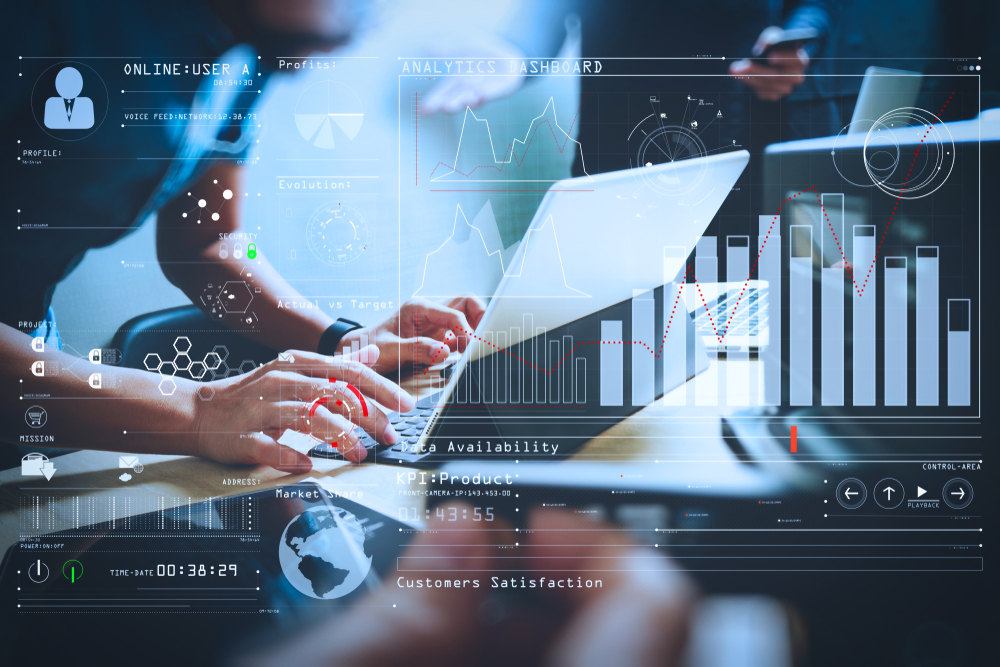Are You Ready for the Future of B2B Sales?
B2B sales boomed during the pandemic and are expected to reach $1.8 trillion by 2023 — three times the $600 billion projected for B2C by 2024. Understanding the dynamics of today’s B2B sales process, and employing sales strategies that work, is vital. And the most successful techniques focus on the customer experience.
B2B vs. B2C
Business-to-business (B2B) companies sell products and services to other businesses, in contrast with business-to-consumer (B2C) companies, which sell directly to consumers. B2B sales fall into a few broad categories:
- Supply sales refers to a supplier selling consumables used to support another business, including office supplies, employee workwear, or production equipment. Although similar in process to B2C businesses, supply sales occur on a higher scale and may require authorization.
- Wholesale and distribution companies sell manufacturing or retail components to other businesses. Restaurants and fast-food franchises rely on wholesale food distributors to supply the products they use to create menu items; apparel shops buy clothing at wholesale prices for resale in their stores.
- Service and software sales occur when a service provider sells a service instead of a tangible product. Accountants provide a service to businesses of every size, for example, and they may provide tax accounting software in addition to — or instead of — continuously providing personal service.
In addition to higher average transaction values than B2C sales, B2B also has longer sales cycles and multiple stakeholders. B2B is big business. According to Digital Commerce 360, “In 2021, online sales on B2B ecommerce sites, log-in portals and marketplaces increased 17.8% to $1.63 trillion from $1.39 trillion in 2020.”
Clearing hurdles
But big business also means tough competition. B2B companies must be clear about potential obstacles when creating sales strategies to attract new clients and move them through the sales funnel. Obstacles may include:
- Skeptical modern buyers. Customers are cautious about advertising and savvy about conducting research before extending trust — and money. To counter skepticism, B2B companies must focus on helping clients solve their problems and adding value to their businesses. Aggressive sales and marketing techniques have given way to a focus on client needs and building lasting professional partnerships.

- Limited or lack of online presence. Before making a purchase, most buyers — especially B2B buyers — consult reviews, testimonials, and articles to find out as much as possible about your company’s service or product. Cultivate social proof to increase trust in your business and grow your sales numbers. Consider publishing case studies and encouraging existing customers to share reviews and testimonials on your site.
- Risk of purchase awareness. For B2B buyers, a bad purchase can have significant effects on their financials, and there is not always room in the budget to repair the damage. B2B customers take plenty of time to weigh their options and reduce risk factors in making the decision to purchase. Establishing a history of satisfaction among your longtime customers will help ease anxiety and nudge new buyers in your company’s direction.
Customer-centric sales
As we move through 2022, buyers have higher expectations than ever, and the business world is responding. B2B sales trends for the year are laser focused on improving the customer experience. Strategies for meeting buyer expectations include:
- Reevaluating stakeholder management. If each product line or line of business has different key performance indicators (KPIs), they may inadvertently compete. Think of these groups cohesively and design KPIs to drive positive results across the whole of the customer experience. Set appropriate milestones and practice open communication to increase success for your stakeholders, your business, and your clients.
- Adopt guided selling tools. Used to support sales teams at specific sales touchpoints, guided selling tools use artificial intelligence (AI) to learn from customer behavior and optimize their experience, navigation, product discovery, and overall decision-making process. Guided selling tools deliver recommendations to enhance sales team efficacy and success.
- Expand data reach. Unify external data with your operational and customer data for a more complete perspective. For example, publicly available data from the local motor vehicle department can correlate vehicle data with tire information and provide a list of tire options for a customer. Connecting data this way allows B2B operations to build a progressive profile for customer interactions and relationship management.
- Connect data to build customer relationships. Customers provide a wealth of information and preferences when they access your system. A customer portal that combines their data with the data in your customer relationship management (CRM) system helps your sales team make more meaningful connections and develop deeper customer relationships.
- Connect systems. Collect and analyze data from all customer-facing operations to inform a holistic approach to the customer experience. Drawing upon this insight provides visibility across business functions from inventory to delivery and customer retention.
Data transparency and accessibility improves every aspect of your B2B sales process from lead generation to sales team motivation.
Keep your sales team motivated and informed with an accessible, transparent, and secure sales compensation management solution (SCMS). Schedule a demo with SalesVista today.
Share this
You May Also Like
These Related Stories

Essential Steps for Developing a Winning Sales Strategy
.jpeg)
Commission Software: Should You Build or Buy?
